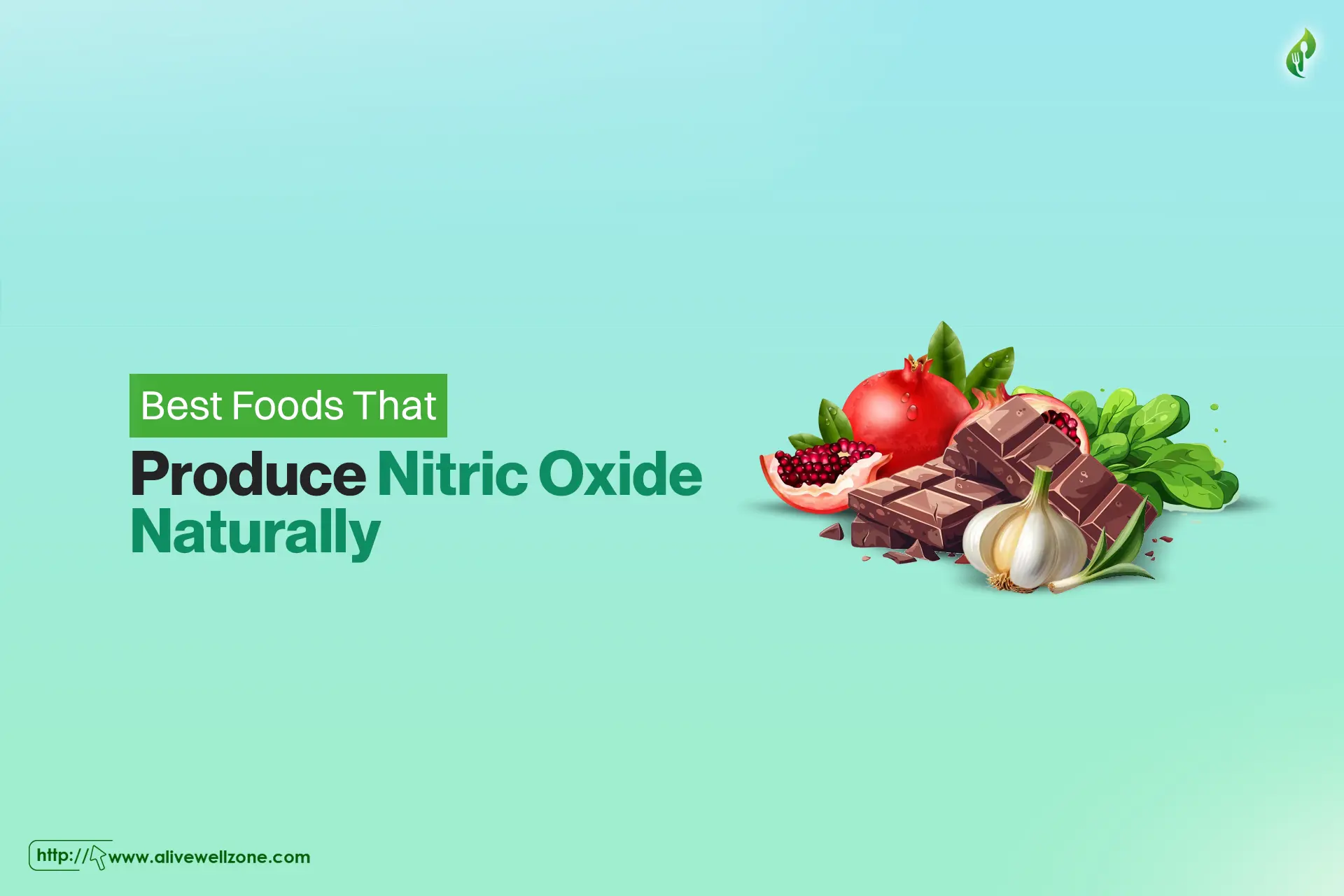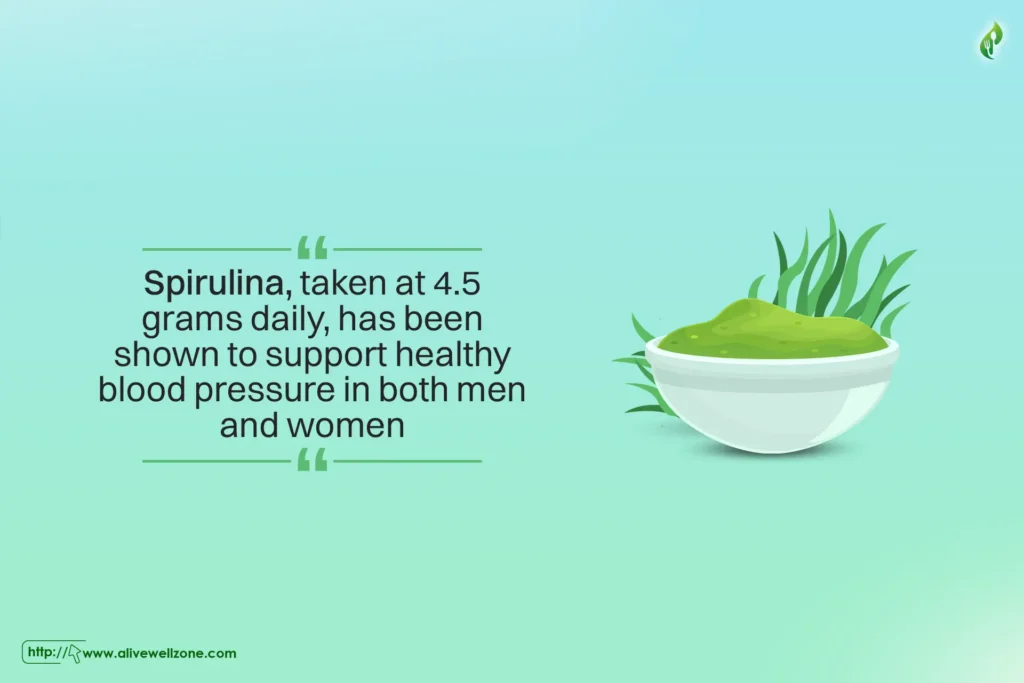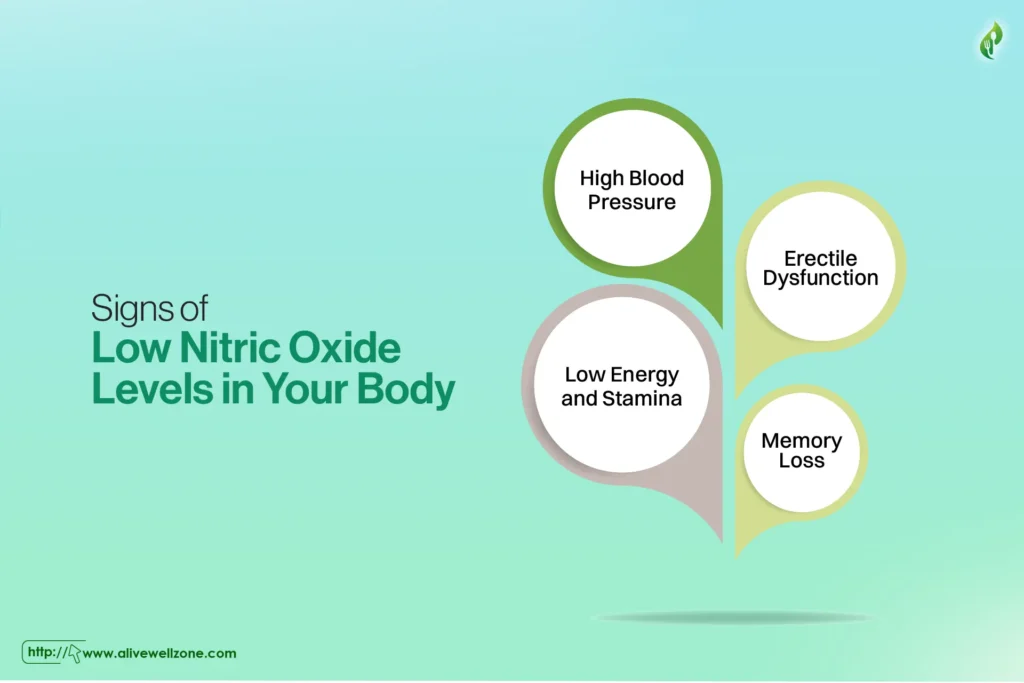
Last Updated on November 4, 2024 by Helena Akter
Feeling sluggish and lacking energy? Your body might be signaling a nitric oxide deficiency! Your heart health to cognitive function rely on this remarkable molecule. But don’t worry, you can eat foods that produce nitric oxide naturally to fill up the deficiency.
Those foods are beets, leafy greens, garlic, watermelon, pomegranate, spinach, dark chocolate, etc. They improve blood flow, lower blood pressure, and boost energy. So, include these into your diet for optimal well-being.
You’ll also know about a few lifestyle factors that can help you to maintain proper nitric oxide levels. Plus, we’ll share some inhibitors along with major signs of nitric oxide deficiency. Overall, it’ll be wholesome for you. So keep reading!
Key Takeaways
- Increasing Nitric Oxide Naturally: Nitric oxide is vital for blood flow, heart health, and overall wellness. You can increase its levels by consuming nitrate-rich foods like beets, leafy greens, and citrus fruits, as well as supplements like L-arginine and L-citrulline.
- Lifestyle Factors: Sunlight, regular exercise, stress management, and proper sleep are vital for maintaining healthy nitric oxide levels. These practices support overall cardiovascular health and help manage blood pressure.
- Inhibitors to Avoid: Certain factors, such as smoking and excessive use of mouthwash, can reduce nitric oxide production. By avoiding these, you can keep your nitric oxide levels up and prevent heart disease.
- Signs of Deficiency: Low nitric oxide can lead to high blood pressure, memory loss, low energy, and erectile dysfunction. The earlier you spot these signs, the better chance you have of preventing long-term issues.
What is Nitric Oxide?
Nitric oxide is a natural substance in your body. It helps your blood move around, carrying things like food and oxygen to all parts of you. You can increase the amount of nitric oxide in your body by eating foods with a lot of nitrates in them.
Your body changes these nitrates into nitric oxide. Also, something called L-arginine can turn into nitric oxide and help your blood flow well.
Foods that Produce Nitric Oxide to Improve Overall Health
Try adding the following foods to produce and increase your nitric oxide.

1. Beets
Beets are a great source of nitrates, which your body turns into nitric oxide. That’s why they’re one of the best foods for producing nitric oxide levels, right after leafy greens.
A study found that drinking about 70 milliliters of beet juice can quickly increase nitric oxide in your body.
You can enjoy beets in many ways. Try adding them to salads, smoothies, or even sweet treats like brownies. In fact, many athletes consume beet juice as part of their healthy breakfast foods.
It has about 270 milligrams of nitrates in every 100 grams. So, when buying beet products, choose ones with low added sugar to get the most health benefits.
2. Garlic
Garlic, especially when aged into an extract, can help protect your heart. It can lower your cholesterol levels, blood pressure, and reduce inflammation. That’s because garlic has a special substance called allicin.
When garlic is broken down, allicin turns into other helpful things. Allicin might help your heart by making your blood vessels wider. It can lower your blood pressure.
So, you should take garlic along with top heart-healthy foods to keep your heart fit.
3. Dark Chocolate
When searching for what foods produce nitric oxide, dark chocolate plays a vital role.
It has special compounds called flavanols. These are good for your health. Studies show that flavanols in cocoa can help your heart by increasing nitric oxide. It also protects your body from damage.
One study found that eating about 30 grams of dark chocolate every day can help lower your blood pressure. That’s because it raises nitric oxide levels.
On top of that, dark chocolate is good for your blood because it helps blood flow better and lowers blood pressure.
4. Amino acids
Amino acids are building blocks our bodies need to make nitric oxide. Two important ones are L-arginine and L-citrulline. You can get amino acids from supplements.
L-citrulline
L-citrulline is an amino acid. Our bodies change it into L-arginine, which helps make nitric oxide. We make some L-citrulline naturally, but supplements can boost nitric oxide levels better.
Studies show citrulline supplements can increase nitric oxide quickly. Over time, this might improve blood flow, how well you exercise, and blood pressure. Citrulline supplements are usually very safe.
L-arginine
L-arginine is another kind of amino acid. You can find it in foods like nuts and seeds. Some studies say eating more foods with L-arginine might help your body make more nitric oxide.
Most healthy people make enough L-arginine on their own. But some people, like pregnant women, might need extra. You can get L-arginine from supplements.
Taking about 20 milligrams each day is usually okay, but some people might have digestive troubles even with small amounts.
5. Leafy Greens
Leafy greens are the best options to get nitrates when searching for what food is high in nitric oxide. Nitrates help keep nitric oxide levels good. In fact, if you regularly eat leafy greens, it can often minimize cardiovascular risks.
Some great leafy greens are —
Kale
Kale has lots of potassium and magnesium that help your heart stay healthy. Harvard Medical School says this. Kale also has nitrates, which help make nitric oxide.
To keep kale healthy, it’s better to cook it lightly with steam before eating.
Spirulina
Spirulina, taken at 4.5 grams daily, has been shown to support healthy blood pressure in both men and women. It’s packed with plant protein, which is important for making nitric oxide.

Also, Spirulina is full of vitamins, minerals, and chlorophyll, which are good for your body’s cells.
Arugula
Among leafy vegetables, arugula stands out. It contains the most nitrates. That’s 480 milligrams in every 100 grams. It’s like broccoli and cabbage, and it’s full of antioxidants that help protect nitric oxide in your blood.
Try adding arugula to your salads for a healthy boost.
Spinach
Spinach is great for your health. It helps your body make more nitric oxide, which can lower your blood pressure. One study showed that eating spinach can increase nitric oxide in your saliva by 8 times!
Plus, Spinach has lots of potassium, which helps your body get rid of extra salt and keep your blood pressure healthy.
Cabbage
Cabbage comes in different colors and is good for you. It helps your body make nitric oxide. Plus, it has a lot of fiber, which is good for your overall health.
Swiss Chard
Swiss chard is a healthy vegetable with both green leaves and white stems. It has a lot of dietary nitrate that helps to improve overall health and wellbeing. To get the most out of it, cook it by steaming both the leaves and stems.
6. Citrus Fruits
Citrus fruits are packed with vitamin C. This vitamin is important for protecting a substance in our body called nitric oxide. Harmful particles called reactive oxygen species can damage nitric oxide, but vitamin C keeps it protected.
Vitamin C also helps repair a molecule called BH4. This molecule is needed for an enzyme that makes nitric oxide. Keeping BH4 healthy is important because it stops problems with nitric oxide production.
Besides, studies show that eating citrus fruits, which are high in vitamin C, can help lower blood pressure and protect blood vessels from damage.
7. Watermelon
Watermelon is much more than tasty and refreshing, unlike the controversial Fizzy juice for weight loss. It has a special substance called L-citrulline. Our bodies change this into another substance called arginine, which helps make nitric oxide.
A small group of people drank 300ml of watermelon juice every day for 2 weeks. After that, they had more nitric oxide in their bodies. Other studies suggest that eating watermelon can help increase nitric oxide, which is good for exercise, blood pressure, and blood flow.
Moreover, watermelon can help your body recover after different types of workouts.
8. Nuts and Seeds
Nuts and seeds have a lot of arginine. Arginine is a special building block that our body uses to make nitric oxide.
A study looked at over 2,700 people and found that people who ate more arginine had higher levels of nitric oxide in their blood.
Plus, eating nuts, especially pistachios and sesame seeds, has been linked to lower blood pressure.
9. Pomegranate
Pomegranates are known for their bright red seeds. They’re packed with antioxidants, which help protect nitric oxide (NO) from damage. Hence, it’s one of the top foods that are high in nitric oxide.
Studies have shown that pomegranate juice can shield NO from harm. In animal tests, pomegranates seemed to boost the production of NO. It’s important because NO helps blood flow.
Other studies, in both people and animals, suggest that pomegranates can improve blood flow. It might help protect against heart problems.
10. Red Wine
Red wine is full of antioxidants. People think it’s good for your health. Some studies say red wine can help increase nitric oxide (NO) in your body.
A study from 2016 found that a thing called resveratrol, which is in red wine, might help protect your heart. That’s because it can help increase NO. But we need more studies on people to be sure.
Drinking red wine in small amounts is often linked to lower blood pressure and a healthier heart.
Benefits of Nitric Oxide to Your Overall Body
Nitric oxide helps keep your body healthy. It works in many different parts of your body.
- Immune System: Nitric oxide fights off germs and helps your body’s defense cells work better together.
- Brain and Nerves: Nitric oxide helps your brain cells talk to each other and can help with blood flow to the brain.
- Heart and Blood: It helps your blood vessels relax, which improves blood flow and lowers blood pressure.
- Lungs: It makes it easier to breathe, especially if you have problems like asthma.
- Kidneys: It helps your kidneys make urine by increasing blood flow to them.
- Digestion: Nitric oxide helps your gut move food along.
Nitric oxide can also help with —
- Lowering bad cholesterol
- Reducing the risk of diabetes and problems like kidney disease and blindness
- Easing arthritis pain and swelling
- Protecting your skin from the sun
- Stopping blood clots
- Lowering the risk of dementia
Signs of Low Nitric Oxide Levels in Your Body
Low nitric oxide can hurt your overall health, your quality of life, and how you feel every day. If you have strokes, heart problems, or Parkinson’s disease, you might not have enough nitric oxide.
Here are some other signs that your nitric oxide levels might be low —

High Blood Pressure
High blood pressure is bad for your heart. It’s often called hypertension. Eating too much salty or fatty food can make your blood vessels narrow. This puts extra strain on your heart.
Memory Loss
Not having enough nitric oxide can harm your brain. It can cause memory problems and diseases like Alzheimer’s, especially as you get older.
Low Energy and Stamina
If you don’t move much, you might feel tired and have poor blood flow. This can lead to diabetes. Exercise helps you make more nitric oxide, which gives you energy and better blood flow. It can also help prevent diabetes.
Erectile Dysfunction
Men with problems getting or keeping an erection might be given L-arginine. This helps blood flow to the penis.
Note: Mood changes like anxiety and depression along with blurred vision can also be a sigh of low nitric oxide in your body.
Lifestyle Factors Influencing Nitric Oxide Levels
Living a healthy lifestyle helps you produce more Nitric Oxide —
Dietary Nitrate-Rich Foods
When you eat foods rich in nitrates, your body uses a natural process to turn these nitrates into nitric oxide.
- First, bacteria in your mouth convert the nitrates into nitrites.
- Then, these nitrites are further broken down in your body to produce nitric oxide.
In addition, L-arginine is an amino acid present in foods like nuts, seeds, meat, and poultry. It plays an vital role in producing nitric oxide through the nitric oxide synthase (NOS) pathway.
Sunlight
Sunlight is important for a good immune system. Studies show that the UV rays can help lower blood pressure. It happens when sunlight touches your skin and makes a substance called nitric oxide. Nitric oxide is good for your overall health.
Exercise
When you exercise, your blood flow increases. It then prompts the endothelial cells lining your blood vessels to produce nitric oxide. This compound helps widen your blood vessels, increasing circulation and delivering more oxygen to your muscles.
Stress Management
Stress is something most people deal with. It can harm our body and mind. When stress lasts a long time, it makes the body produce more cortisol. It can stop the body from making nitric oxide.
To help your body, it’s important to manage stress. Things like mindfulness exercises for anxiety, yoga, and meditation can help.
Sleep
Sleep is really important for your body. It helps control nitric oxide, which is good for your blood vessels. Getting enough sleep helps keep your blood vessels healthy.
If you don’t sleep well, your blood vessels might not work as they should. It can lead to heart problems. So, you must get core sleep to stay healthy.
Avoidance of Nitric Oxide Inhibitors
Some things can help make more nitric oxide (NO), but other things can lower it. If you avoid things that block NO, your body can use more of it.
Smoking
Smoking is bad for your body. It stops your body from making nitric oxide. Smoke also has harmful things that use up nitric oxide.
Quitting smoking is very important. It can help protect your lungs, heart, and body from cancer. There are many ways to get help with quitting.
Mouthwash
Mouthwash can kill harmful bacteria that cause dental problems. But it also kills good bacteria that help your body. These good bacteria turn something called nitrates into nitrites for about 12 hours after you use mouthwash.
Nitrites are good for you. To keep your body making enough nitrites, limit mouthwash use.
Final Words
We learned that nitric oxide is a natural substance in our bodies that helps with blood flow and overall health. We can increase nitric oxide levels by eating foods rich in nitrates and L-arginine.
Beets, leafy greens, dark chocolate, and watermelon are some excellent choices. Additionally, good sleep management, stress reduction, and limited smoking can optimize nitric oxide production.
Look, research on foods that produce nitric oxide is ongoing. There might be even more dietary sources and health benefits in the future.
FAQs
What drinks are high in nitric oxide?
Beetroot juice is rich in nitrates, making it one of the top drinks for boosting nitric oxide levels in your body. By converting these nitrates into nitric oxide, these nitrates support cardiovascular health.
What inhibits nitric oxide?
Nitric oxide can be inhibited by compounds like agmatine, L-citrulline, and ADMA. Although L-citrulline is a weak inhibitor, its L-thiocitrulline, derivative, is much stronger, affecting the production of nitric oxide in the body.
What triggers nitric oxide production?
Nitric oxide is produced when the enzyme nitric oxide synthase (NOS) converts the amino acid arginine into nitric oxide. This process is vital for proper blood flow and cardiovascular function.
How to tell if your nitric oxide is low?
Signs of low nitric oxide include high blood pressure and poor blood vessel function. Over time, deficiencies can lead to serious issues like diabetes-related complications, including limb amputation or loss of vision.







